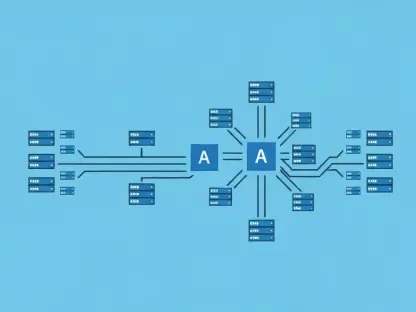The banking industry is currently undergoing significant disruption due to rapid advancements in software engineering, necessitating a fundamental change in its practices and priorities to match the evolving technological landscape. Banks have historically been among the largest spenders on technology, with substantial budgets allocated to application development. Nevertheless, the return on these investments has not always been optimal, mainly because of inefficiencies and the persistence of legacy systems that hinder integration and slow down processes.
The Need for Modernization
Banks’ pivotal role in the global economy underscores the critical need for robust and secure digital infrastructure. Failures in banking transactions—though rare—can lead to widespread economic repercussions, affecting trust and customer retention. Modernizing software engineering practices is urgent, as current technology leaders emphasize faster delivery, product-centric engineering, and smarter development roadmaps. Unlike past episodic digital transformations, today’s shift is continuous and rapidly evolving, driven by technological advancements.
Outdated Technology Infrastructure
One of the major challenges banks face is their outdated technology infrastructure burdened by legacy systems. These systems not only hinder operational efficiency but also stifle innovation. Maintaining technical debt consumes a significant portion of developers’ time, impacting morale and causing customer churn. To achieve next-generation business outcomes, a shift away from legacy systems toward more flexible and scalable solutions is essential. Banks, such as Zions Bancorporation, advocate for incremental modernization over complete overhauls to address these issues efficiently.
Transition to Agile and Cloud
To overcome these challenges, banks have been moving towards cloud-first principles, hybrid cloud environments, and adopting agile development methodologies. Cloud computing offers benefits like enhanced data integration, scalability, and faster adoption of new technologies. Agile practices have facilitated quicker feature delivery and better alignment with market demands. However, some banks still struggle with fully implementing agile methodologies due to outdated tech stacks and complex compliance requirements.
Product-Led Development
A significant evolution in banking software engineering is the shift from project-led to product-led development. This approach prioritizes creating, delivering, and continuously improving products rather than merely completing projects. It emphasizes customer-centric outcomes, enabling engineers to take a proactive role in development. Despite this shift, banks encounter challenges in establishing effective product ownership, including resistance to change and difficulties in talent recruitment.
The Role of AI in Banking
AI is emerging as a transformative force in software engineering within the banking sector. AI tools are optimizing coding, testing, and design processes, resulting in cost savings and productivity improvements. Large banks, with substantial engineering workforces, stand to benefit significantly from AI-driven coding tools like Amazon Web Services’ Q, IBM’s watsonx, and Microsoft’s GitHub Copilot. These tools facilitate faster coding, modernization of legacy systems, and improved developer efficiency.
Reskilling and Talent Management
As banks navigate these shifts, reskilling and talent management become critical. Significant gaps exist in new skills, particularly in machine learning and AI. There is also a need to bridge the generational gap between experienced developers and new entrants to the industry. Banks should focus on hiring engineers who understand the history of the banks’ architecture and can innovate within regulated environments effectively.
Optimizing Third-Party Partnerships
In terms of third-party partnerships, banks must reassess their external collaborations to maximize value. Fewer, more strategic partnerships that focus on scaling operations and integration will be more beneficial than multiple fragmented collaborations. Additionally, adopting a hybrid model that combines offshore units with third-party providers can help banks efficiently manage operational demands.
Future Considerations for Banks
The banking industry is currently facing significant disruption due to rapid advancements in software engineering, requiring a fundamental shift in its practices and priorities to align with the evolving technological landscape. Historically, banks have been among the largest spenders on technology, dedicating substantial budgets to application development. Despite this heavy investment, the return has often been less than optimal. This shortfall is largely due to inefficiencies and the persistence of legacy systems that hamper integration and slow down processes. These outdated systems create bottlenecks, making it challenging for banks to innovate at the pace needed to stay competitive. As a result, there is a growing necessity for banks to overhaul their existing technology infrastructure. Embracing modern, agile methodologies and leveraging cutting-edge technologies like artificial intelligence, blockchain, and cloud computing can help banks improve efficiency, reduce costs, and enhance customer experience. By adapting to these technological advancements, banks can better position themselves to thrive in an increasingly digitized world.









